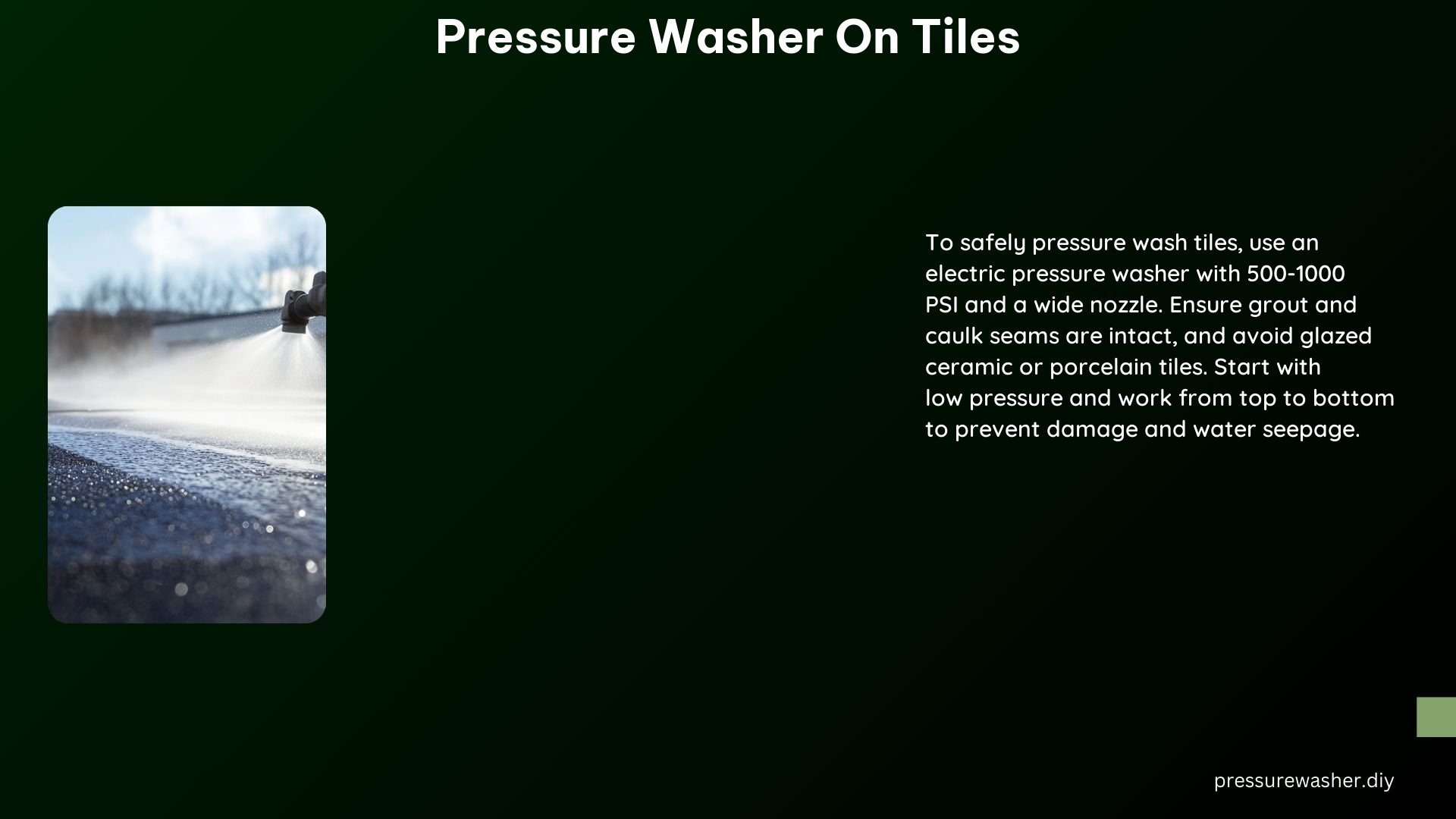Pressure washers can be a powerful tool for quickly and effectively cleaning tile surfaces, both indoors and outdoors. Whether you’re dealing with stubborn dirt, grime, mold, or mildew, a pressure washer can save you hours of manual scrubbing and restore the pristine appearance of your tiles. However, it’s crucial to understand the proper techniques and precautions to ensure safe and successful pressure washing of your tiles.
Benefits of Pressure Washing Tiles
Efficient Cleaning
Pressure washing can remove even the most stubborn dirt, grime, mold, and mildew from tile surfaces with ease. The high-pressure water stream can penetrate deep into the pores of the tiles, dislodging and flushing away contaminants that would be difficult to remove manually. This makes pressure washing an incredibly efficient cleaning method, especially for large tile areas.
Time-Saving
Compared to traditional manual scrubbing, pressure washing can save you a significant amount of time and effort. A task that might take hours or even days of manual labor can be completed in a fraction of the time using a pressure washer. This makes pressure washing a highly convenient option for homeowners and professionals alike.
Precautions for Indoor Tile Pressure Washing

Electric Pressure Washer
When pressure washing tiles indoors, it’s essential to use an electric pressure washer instead of a gas-powered one. Gas-powered pressure washers can pose a risk of water leaks and other issues that could potentially damage your indoor environment. Electric pressure washers are safer and more suitable for indoor use.
Overspray Management
Pressure washing can generate a significant amount of overspray, which can potentially damage or stain nearby surfaces. To mitigate this risk, it’s crucial to use plastic sheeting or other protective barriers to cover any areas that you don’t want to be affected by the overspray. Additionally, ensure that the water has a proper drainage path to prevent any pooling or flooding.
Low Pressure
When pressure washing tiles, it’s important to start with a low pressure setting, typically around 500-1,000 PSI (pounds per square inch). This lower pressure helps to prevent damage to the tiles, especially if they are delicate or have a glazed surface. Gradually increase the pressure as needed, but be cautious not to exceed the recommended range.
Nozzle Distance
The distance between the pressure washer nozzle and the tile surface is crucial. Keep the nozzle at a safe distance, typically around 6-12 inches, to avoid direct high-pressure contact with the tiles, which could cause chipping, cracking, or other damage. Additionally, use a wide-angle nozzle, such as a fan tip spray, to help soften the water pressure and distribute it more evenly across the surface.
Avoid Delicate Tiles
Certain types of tiles, such as glazed ceramic or porcelain, as well as tiles that are particularly thin or weak, should be avoided when pressure washing. The high-pressure water stream can easily damage these delicate tiles, leading to cracks, chips, or other irreparable harm. If you’re unsure about the suitability of your tiles for pressure washing, it’s best to consult a professional.
Grout and Caulk Integrity
Before pressure washing, carefully inspect the grout and caulk seams around your tiles. Ensure that they are in good condition and properly sealed to prevent water from seeping behind the tiles, which could lead to further damage or even structural issues.
Safety Precautions
Eye Protection
When operating a pressure washer, it’s essential to wear appropriate personal protective equipment (PPE), including safety goggles or a face shield. The high-pressure water stream can easily cause eye injuries, so proper eye protection is a must.
Structural Integrity
Ensure that the surface you’re pressure washing can withstand the force of the pressure washer. Tiles that are installed on a weak or unstable substrate may not be able to handle the pressure, leading to cracking, loosening, or even complete detachment of the tiles.
Technical Specifications
Pressure
For cleaning bathroom tiles, a pressure range of 500-1,000 PSI is typically sufficient. This lower pressure range helps to minimize the risk of tile damage while still effectively removing dirt, grime, and other contaminants.
Nozzle Size
When pressure washing tiles, a 2-inch nozzle is recommended for cleaning grout lines and other hard-to-reach areas. This nozzle size provides a focused, high-pressure stream that can effectively dislodge and flush away built-up debris in the grout.
Alternatives for Cleaning Grout
Chemical Cleaning
If you’re hesitant to use a pressure washer on your tiles, you can consider chemical cleaning methods for the grout. Diluted solutions of hydrochloric acid, ammonia, or bleach can be effective in removing stubborn grout stains and discoloration.
Vinegar and Hydrogen Peroxide
For a more natural and eco-friendly approach, a mixture of white vinegar and hydrogen peroxide can also be an effective grout cleaning solution. This combination can help break down and remove dirt, mold, and mildew without the need for pressure washing.
Professional Assistance
Expertise
If you’re unsure about the proper techniques or safety precautions for pressure washing your tiles, it’s always a good idea to consult with a professional. Experienced pressure washing contractors have the knowledge and equipment to safely and effectively clean your tiles without causing any damage.
By following these guidelines and taking the necessary precautions, you can safely and effectively use a pressure washer to clean your tiles, both indoors and outdoors, and restore their pristine appearance.
